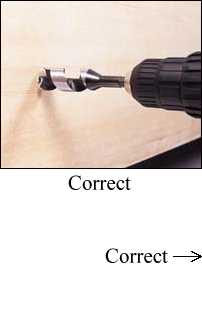
Spring is here! It's time to get rid of a winter's worth of dust and grime. Unfortunately, it's also the time of year when we all want to be outside enjoying the fresh air. The last thing on our minds is cleaning. Yuck! But the good news is that with a thorough spring cleaning, all of the fragrant crispness of springtime can be felt throughout the house. And with the following gameplan to guide you, you'll be able to clean up quickly and efficiently, with plenty of time left over to stop and smell the newly budding roses.
BEFORE YOU CLEAN
Even before you clean, there are a few precautions you should take so that cleaning can be finished as painlessly as possible.
-- Wear comfortable, old clothes that you won't mind staining or getting dirty.
-- Take stock of your cleaning needs and supplies. Don't wait until you're about to clean the oven to find out that you don't have any oven cleaner left. Have everything on hand and ready to go for a smooth time.
-- Prepare one bucket of supplies to bring with you to every room. All you really need are a few rags, some paper towels, furniture polish, and one good all purpose glass and counter cleaner. These items will do the trick for most cleaning jobs. Also, grab two empty garbage bags: one to carry garbage you find along the way, and the other to fill with things you no longer want but are still useful. You can give these items away or sell
them at a later date.
--Turn off the TV and the phone! The quickest cleaning is accomplished without any distractions.
--Get organized. Make a list of the rooms you want to tackle, then clean each room fully before moving on to the next.
--Let the sun shine in! Open the windows and let the clean, green aroma of spring's new flower and plant life enter your home. Not only will the mustiness of winter be removed, but you'll also protect yourself from inhaling dust and dangerous fumes from cleaning products.
DURING CLEANING
--Play some fun, lively music. Before you know it, your adrenaline will start pumping and you'll be dancing your way through the house.
--Toss away everything you don't use. I mean everything! Be ruthless. Less clutter not only makes future dusting easier, it also has a tendency to give us a freer, more relaxed frame of mind when we enjoy these rooms. Feng shui, the art of uncluttered living, has long been practiced by Chinese people. It is believed that if the universe's energy, or chi, can easily flow through a room, our lives will be more harmonious and joyful.
Decorators worldwide are now embracing the simple beauty of barer rooms for easier living.
--Gather the extra items in your life and give them to charity, or sell them at a spring-time yard sale. Get the whole family in the act by telling kids that they can keep the profits from selling toys they no longer use.
--Work around the room in one direction, either left or right. This way, there won't be any time wasted in criss-crossing the room, or vacuuming that same spot twice.
--Clear it off and put it away. This is really the first step to cleaning any room. In the livingroom this means putting away books and recycling old magazines. Clear away all knickknacks and family photos so that dusting and polishing can be finished in a snap. In the bedrooms, remove items stored under the bed, and file away or throw out papers. In the kitchen, remove everything from counters and take down curtains. In the bathroom, clear away potpourri holders, magazines, and waste baskets. Take down the shower curtain and liner for laundering. Just remember to tackle one room at a time. Remove these items and cleaning will be much easier.
-- Wear rubber gloves! Even though it is harder to grip things with gloves than it is with bare hands, it is worth using them to protect your skin from the harshness of hot water and drying chemicals.
AFTER CLEANING
When you're finished cleaning, it's time to put back those items you need and love. Here are a few things to keep in mind.
--The only necessary appliances on kitchen counters are the ones that you use daily or weekly. Stash anything else in cabinets or cupboards. Also, if you have a counter full of cook books you seldom use, you may want to put them on a shelf for more living and cooking space.
-- Try putting treasured knickknacks and photos on different tables, shelves, or even in different rooms. This will give your home a fresh new look.
A GAMEPLAN FOR EVERY ROOM
Following a list makes everything in life easier and more efficient. Here are some spring cleaning tips and techniques for every room in your home.
--Livingroom
1. Dust and vacuum corners and crevices from high points to low. Remember dust falls downward so you want to clean from the top to the bottom of any room.
2. Vacuum furniture, lampshades and pictures. Remember all those gadgets that come with your vacuum cleaner? Use them here, and experiment with different attachments for furniture and corners of rooms.
3. Vacuum or wash curtains.
4. Dust wood furniture.
5. Dust mop floors.
6. Vacuum carpet.
7. Take plants outside for a gentle washing with a fine spray from your garden hose. Plants and their pots get dusty over the winter.
--Bedrooms
1. Wash, or dry-clean curtains.
2. Take blinds outside and wash them with a mild ammonia solution Rinse with that good old stand by--the garden hose!
3. Strip bed linens and dust ruffle.
4. Vacuum your mattress and box spring. Flip and rotate the mattress before putting on new sheets. This will prevent dips from forming on the mattress, and keep it firmer longer.
5. Polish wood furniture and dust knickknacks.
6. Vacuum everything, from the floor behind and under the bed to the carpet, lampshade and pictures.
7. Clean mirrors and wipe down light fixtures and lamps.
8. Dust mop wood floors.
--Kitchen
1. Let cleansers do the scrubbing for you! Spray your oven with cleaner the night before you plan to spring clean your kitchen This will literally "marinate" the grease and grime, making it simple to sponge off.
2. Here is a great microwave cleaning tip: fill a paper cup with water and a few tablespoons of baking soda. Nuke it for about 30 seconds, or until you see the contents explode! Then just take a paper towel and wipe it all
off. The explosion spreads the cleanser over the entire area, and you can even use the moistened rag or paper towel to wipe outside the microwave and its surrounding area.
3. Vacuum stove vents, refrigerator coils, floor, and counters.
4. Defrost that freezer. A blow-drier aimed at the ice will speed up the process. Get rid of old foods, or those jars of things you thought you'd like but never ate. 5. Clean the inside of freezer and fridge with a
solution of three tablespoons of baking soda and one quart of warm water.
6. Clean outside of fridge with glass cleaner.
7. Clean counters, appliances and stove top with an all purpose glass cleaner or the baking soda solution listed above.
8. Wash out the trash can and spray it with a good disinfectant before putting in a new lining. Leave it outside the kitchen for the next step.
9. For linoleum floors, spray a foaming tile cleaner and take a five minute break, (you can change the CD, or start clearing out items in another room). When you come back, you just need to sponge mop the floor. The
foaming cleanser will have already lifted up the dirt so you don't have to.
--Bathrooms
1. Spray shower and tub with strong cleanser.
2. Pour cleaner into the toilet bowl, and spray the outside with the same cleaner. Let the chemicals do the cleaning while you do the next steps.
3. Clean mirrors, chrome, bathroom scale, and light fixtures with glass cleaner.
4. Vacuum everything! This will remove dust and hair that is so hard to get up when surfaces are wet.
5. Empty and clean the wastepaper basket.
6. Clean the sink and wipe off the cleanser you already applied to the shower and tub.
7. Working from the top of the toilet down, clean the outside, and brush and flush the inside.
8. Scrub the floor with a strong cleanser. Tough tile floors can be most easily cleaned by hand with the scrub-brush side of a bathroom-only sponge.
9. One more tip: spaghetti mops are more efficient at getting into tough corners than sponge mops. Many types can even be thrown in the washing machine between cleanings.
Adapted from the Family Digest Spring 1999 article, "Spring Cleaning Tips & Tricks" by Anne Marie Dunatov. Subscribe to Family Digest Magazine Today!
---------
CLEANING FOR SAFETY
Nature is undergoing a fresh start and so are homeowners who are ready to clean up the debris that has been accumulating in basements, storage sheds, and garages over the winter.
-Household and pool chemicals, paints, and poisons should be properly marked and stored under lock and key, away from children's reach. Dispose of any that are leaking, expired, or that look bad.
-When cleaning up hazardous chemicals wear rubber gloves and follow the safety directions on the packaging. Never mix chemicals in the same container. If you don't know how to dispose of them, seek outside advice. Never put them into the trash or pour down the drain.
-Make sure gasoline and cleaning fluids are well marked and stored in a cool, dry place away from the house and out of the reach of children and pets. Use only approved containers for gasoline storage.
-Never use gasoline to clean skin, clothes, auto parts, or floors.
-Clean up work areas. Put dangerous tools, adhesives, matches, or other work items away from children's reach.
-Check your barbecue grill for leaks and cracks, and be sure to store any propane tanks away from your house and garage.
-Remove all fire hazards, including stacks of rags, newspapers, and magazines. Pay special attention to the spaces around your furnace, hot water tank, fireplace, space heaters, and dryer, as well as under the stairs.
YARDWORK SAFETY
Itching to get the yard into shape for the summer? Did you know More than 60,000 people are treated in emergency rooms each year for injuries caused by lawnmowers, trimmers, lawn-edgers, pruners and power saws? Here are ways to help ensure your spring spruce-up is disaster-free.
-Limber up. Yard chores may seem easy, but they involve muscles you probably haven't used in a while.
-Always wear protective clothing when you handle pesticides and fertilizers.
-Rake before you mow to prevent any stones and loose debris from launching into the air.
-Never operate a mower in your bare feet and avoid wearing loose clothing.
-Never start a mower indoors.
-When refuelling your mower, make sure the engine is off and cool. Don't spill gasoline on a hot engine - and don't smoke while pouring gasoline.
-Never leave your mower operational while unattended.
-Don't use electrical mowers on wet grass.
-Read the manufacturer's instructions carefully before using the tools.
-Inspect the product for damage and don't use it if there are problems.
-Use proper eye protection.
-Make sure blade guards are in place on all cutting equipment.
-Don't let tools get wet unless they are labelled "submersible".
-Unplug all tools when not in use.
-Make sure the tool is in the "off" position before you plug it in.
-Store gasoline-powered equipment away from anything that uses a pilot light.
-Make sure you use the right saw for the task, and always wait for the saw blade to stop before pulling away from a cut to avoid kickback.
-When pruning trees, be careful not to let metal ladders or trimmers contact overhead wires.
-Before you do any "hands on" weed removal, make sure you know how to identify poison ivy, sumac, oak, and similar toxic plants. Find out ahead of time how to treat the rashes they cause to reduce the irritation.
OUTDOOR SAFETY
Ready for some outdoor exercise and adventure? Here are a few pointers.
-Winter's inactive muscles can take only so much strain. Don't overdo it - build up slowly so you don't have strains that can put you out of commission for some time.
-It may look appealing, but don't wander on frozen rivers and lakes in the spring. The ice is beginning to thaw, and you never know just how thin the ice really is.
-Spring's extra rain and thawing snow can cause normally safe rivers, streams, and creeks to turn treacherous. Even standing on banks can be risky as they can be undercut by rushing water and give in under your weight.
-Springtime is also severe weather time. If the skies look threatening, check to see if a storm watch or warning has been issued before you initiate outdoor activities. If you're already outside and thunderstorms threaten, go immediately into a building or enclosed vehicle. For tornadoes, go to the nearest safe structure, or the basement or interior first floor room of your home. If there's no time to follow these precautions, take cover in a ditch or depression in the ground.
-Cold Shock Kills! If you fall into cold water, you will begin gasping for air. If you are underwater, this may be your last breath! Wearing a personal flotation device increases your chances of coming back up. Always wear a Canadian approved personal flotation device and make sure it fits your body, as well as your activity. It can save your life!
-Using a small open powerboat? Small boats tend to be unstable and can be very dangerous, especially if overloaded. Check for a capacity label if your boat can be fitted with a motor. The capacity label tells you the maximum safe weight your boat can carry. If your boat does not have a label, contact the retailer or manufacturer to get one. Don't Overload! For more information on capacity labels visit www.safeboating.gc.ca
-Check your boat thoroughly each time you use it. Look for small holes caused by rust build-up or hitting debris in the water, and make sure you have all the required safety equipment (floatable rope, buoy, whistle, water proof matches etc)
LADDER SAFETY
Ready to do some home repairs? On average, about 145,000 people visit the emergency room each year, because of ladder mishaps. Here are a few safety steps:
-Read the manufacturer's instructions that come with your ladder. They contain guidelines for weight and height limits as well as for the proper use of their product.
-Inspect the ladder before using it to make sure there are no loose or broken rungs.
-Make sure the ladder is the right height for the job. Many accidents happen when people overextend their reach because their ladders are too short.
-Never stand on a ladder's bucket shelf.
-Make sure the ladder is completely open and that all of its feet are planted on a firm, level surface. Extension ladders should not be placed at an angle that is too extreme.
-Avoid using a metal ladder near electrical sources.
-Face the ladder when climbing down and make sure your weight is centered between the two sides.
-Whenever possible have a friend present to help hold the ladder for stability.
These are just a few of the safety precautions to consider during the spring. It's also a great time to replace your smoke detector batteries, make sure your fire extinguishers are placed in proper locations around your home, and ensure you have a working flashlight and battery-powered radio for spring storms. By taking the right precautions when warmer weather beckons, you and those around you can enjoy a safer, healthier spring.



















